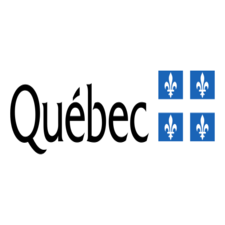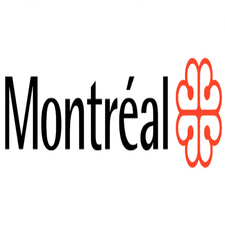Pente
Type of resources
Topics
Keywords
Contact for the resource
Provided by
Formats
Representation types
Update frequencies
status
-
Matrix of slopes in degrees produced from mosaics of images of digital terrain models from different years according to sectors (2008 to 2020)**This third party metadata element was translated using an automated translation tool (Amazon Translate).**
-

__The link: *Access the data directory* is available in the section*Dataset Description Sheets; Additional Information*__. **Slope classes** express the slope of the terrain in a relatively homogeneous area with a minimum area of 0.5 ha. They are generated from a numerical model that groups terrain slopes into six classes: + 0-3% zero + Low by 4-8% + 9-15% soft + Moderate by 16-30% + 31-40% strong + Steep by 41% or more These data cover almost all of Quebec south of the 52nd parallel. This map is presented in two groups: grouping at the provincial level and grouping at the scale of 1/250,000. Each grouping represents an assembly of sheets produced on a scale of 1/20,000. The datasets were originally produced in 2005 and then updated in 2006. In 2010, they were enhanced with slope information for the northernmost part. No updates have been made since then. __For more information, please refer to the document: [Products presenting the concept of slope] (https://diffusion.mffp.gouv.qc.ca/Diffusion/DonneeGratuite/Foret/DONNEES_FOR_ECO_SUD/Classes_pente/01-Documentation/Produits_presentant_la_notion_de_pente.pdf) __ __ ⚠️ Notes: __ The numerical terrain model is prepared from the level curves and altitude points that come from the topographic map at a scale of 1/20,000 and 1/50,000 from the Quebec Topographic Database (BDTQ). This geographic database was produced in 2010 and has never been updated. __ 🕰️ Former names:__ Numerical slope classes, Slope class **This third party metadata element was translated using an automated translation tool (Amazon Translate).**
-

The land use and development plan puts forward a frame of reference aimed at better knowing, protecting and promoting heritage. The data available in this set mainly comes from the mapping of sections 2.1, 2.3 and 3.1 of the Urban and Urban Plan of Montreal, namely __adaptation to climate change__, __territories of ecological interest__, __territories of ecological interest__, the __green and blue frame__, the __green and blue frame__ as well as __constraints and nuisances__. This urban planning and development plan for the agglomeration of Montreal outlines the main parameters that will guide the Montreal agglomeration council in decisions relating to land use planning in the coming years. From a perspective of sustainable development, this document guides decisions that shape the territory in order to promote compact and greener neighborhoods, increase public and active transportation, support the economic dynamism of the agglomeration and highlight areas of interest. Consult the [interactive map] (https://smvt.maps.arcgis.com/apps/webappviewer/index.html?id=d152aaa85b6f4e9086cecdf10c7456db) of the Planning and Development Plan to visualize the thematic data.**This third party metadata element was translated using an automated translation tool (Amazon Translate).**
-

__The link: *Access the data directory* is available in the section*Dataset Description Sheets; Additional Information*__. Products derived from lidar (Light Detection and Ranging) are generated as part of the [__provincial lidar sensor data acquisition project__] (https://mffp.gouv.qc.ca/documents/forets/inventaire/Analyse_retombees_lidar-Finale.pdf). It is therefore to facilitate the use of raw lidar data and optimize its benefits that the Ministry of Natural Resources and Forests (MRNF) generated and made available products derived from lidar in a user-friendly format. Lidar technology makes it possible to accurately provide information such as ground altitude, forest cover height (canopy), slopes, and contour lines. Here is the list of the five derivatives: + Digital terrain model (spatial resolution: 1 m) + Digital terrain model in shaded relief (spatial resolution: 2 m) + Canopy height model (spatial resolution: 1 m) + Slopes (spatial resolution: 2 m) + Level curve (range: 1 m) This data covers almost all of the southern part of the province. This map is distributed by map sheets at a scale of ** 1:20,000**. __ ⚠️ 1) Note that__ the resolution of the following products (digital terrain model, digital terrain model in shaded relief, canopy height model and slopes) **has been slightly degraded** when viewed in the interactive map to ensure efficient display. __ ⚠️ 2) Note that __ **the planimetric and altimeter accuracy of the curves is variable**, but inevitably lower than that of the lidar surveys used to generate them. Moreover, it is recommended to use these level curves only for visual representations, and not for quantitative analyses. **This third party metadata element was translated using an automated translation tool (Amazon Translate).**
 Arctic SDI catalogue
Arctic SDI catalogue
